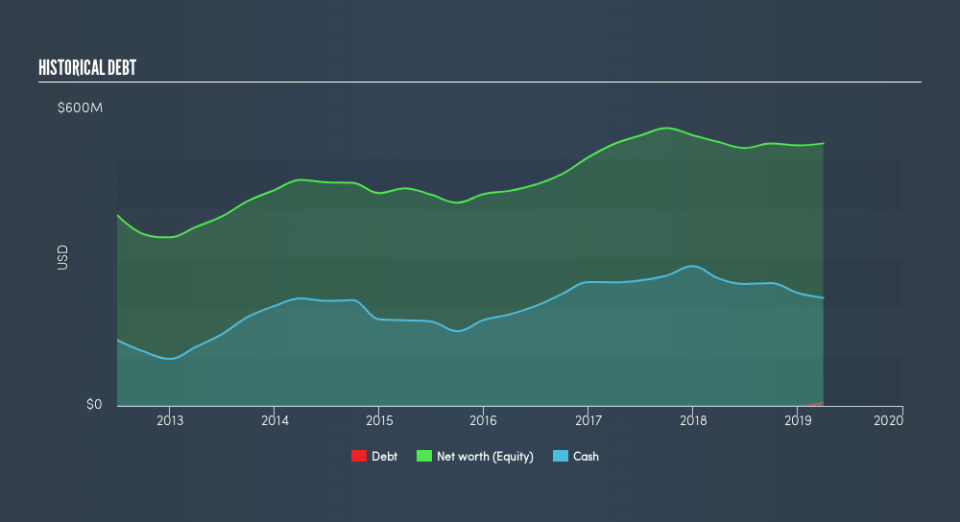Is Power Integrations, Inc. (NASDAQ:POWI) As Strong As Its Balance Sheet Indicates?

Want to participate in a short research study? Help shape the future of investing tools and you could win a $250 gift card!
Small-caps and large-caps are wildly popular among investors; however, mid-cap stocks, such as Power Integrations, Inc. (NASDAQ:POWI) with a market-capitalization of US$2.1b, rarely draw their attention. Surprisingly though, when accounted for risk, mid-caps have delivered better returns compared to the two other categories of stocks. This article will examine POWI’s financial liquidity and debt levels to get an idea of whether the company can deal with cyclical downturns and maintain funds to accommodate strategic spending for future growth. Remember this is a very top-level look that focuses exclusively on financial health, so I recommend a deeper analysis into POWI here.
View our latest analysis for Power Integrations
Is POWI’s debt level acceptable?
Debt-to-equity ratio standards differ between industries, as some are more capital-intensive than others, meaning they need more capital to carry out core operations. As a rule of thumb, a financially healthy mid-cap should have a ratio less than 40%. For Power Integrations, investors should not worry about its debt levels because the company has none! It has been operating its business with zero debt and utilising only its equity capital. Investors' risk associated with debt is virtually non-existent with POWI, and the company has plenty of headroom and ability to raise debt should it need to in the future.
Can POWI meet its short-term obligations with the cash in hand?
Since Power Integrations doesn’t have any debt on its balance sheet, it doesn’t have any solvency issues, which is a term used to describe the company’s ability to meet its long-term obligations. However, another measure of financial health is its short-term obligations, which is known as liquidity. These include payments to suppliers, employees and other stakeholders. At the current liabilities level of US$51m, the company has been able to meet these commitments with a current assets level of US$341m, leading to a 6.7x current account ratio. The current ratio is the number you get when you divide current assets by current liabilities. Having said that, many consider a ratio above 3x to be high, although this is not necessarily a bad thing.
Next Steps:
POWI has zero-debt as well as ample cash to cover its near-term liabilities. Its safe operations reduces risk for the company and shareholders, however, some level of debt could also ramp up earnings growth and operational efficiency. Keep in mind I haven't considered other factors such as how POWI has performed in the past. I suggest you continue to research Power Integrations to get a better picture of the stock by looking at:
Future Outlook: What are well-informed industry analysts predicting for POWI’s future growth? Take a look at our free research report of analyst consensus for POWI’s outlook.
Valuation: What is POWI worth today? Is the stock undervalued, even when its growth outlook is factored into its intrinsic value? The intrinsic value infographic in our free research report helps visualize whether POWI is currently mispriced by the market.
Other High-Performing Stocks: Are there other stocks that provide better prospects with proven track records? Explore our free list of these great stocks here.
We aim to bring you long-term focused research analysis driven by fundamental data. Note that our analysis may not factor in the latest price-sensitive company announcements or qualitative material.
If you spot an error that warrants correction, please contact the editor at editorial-team@simplywallst.com. This article by Simply Wall St is general in nature. It does not constitute a recommendation to buy or sell any stock, and does not take account of your objectives, or your financial situation. Simply Wall St has no position in the stocks mentioned. Thank you for reading.

